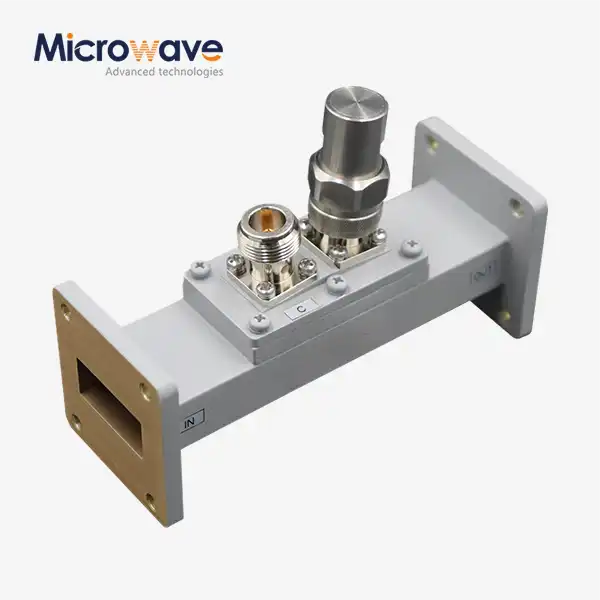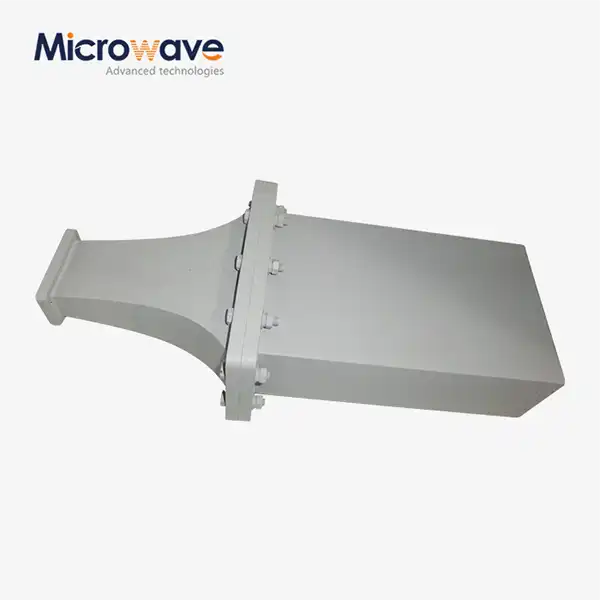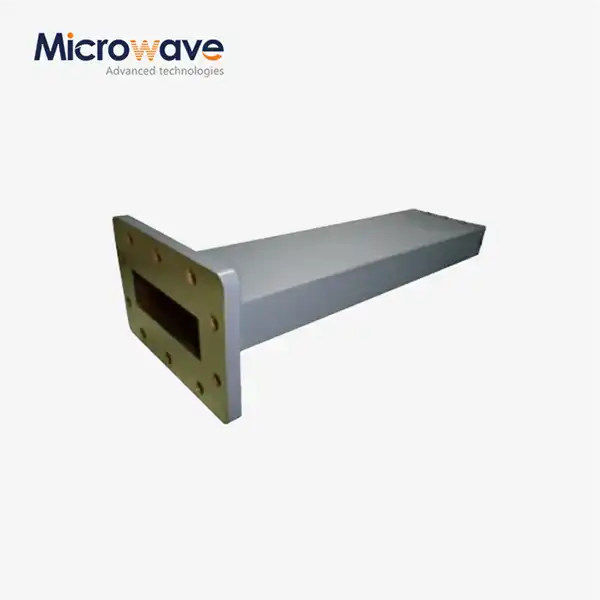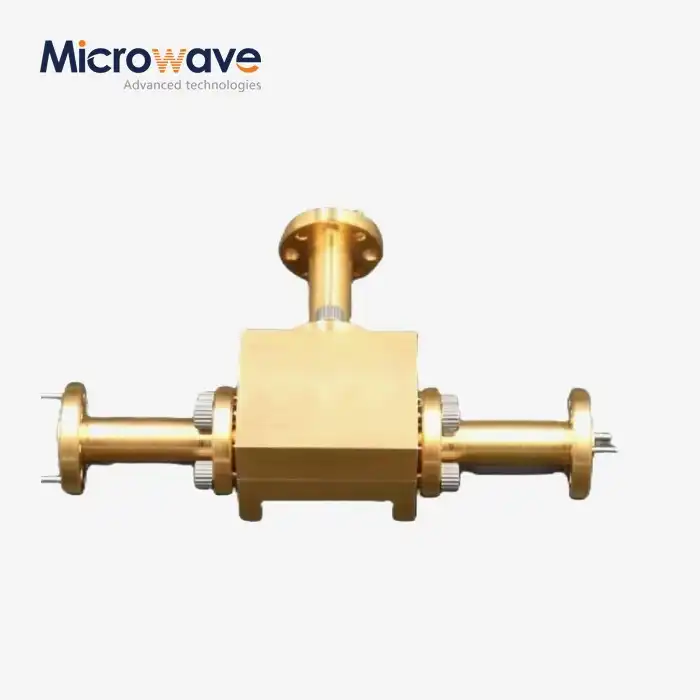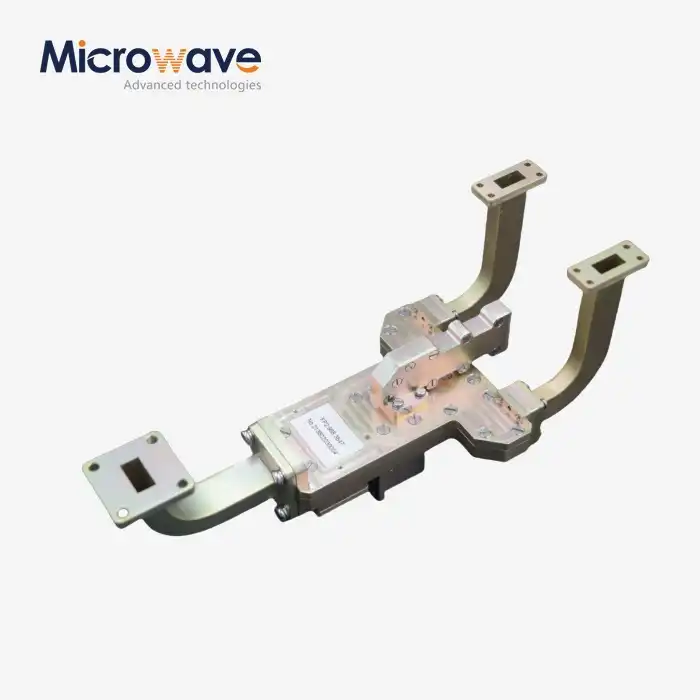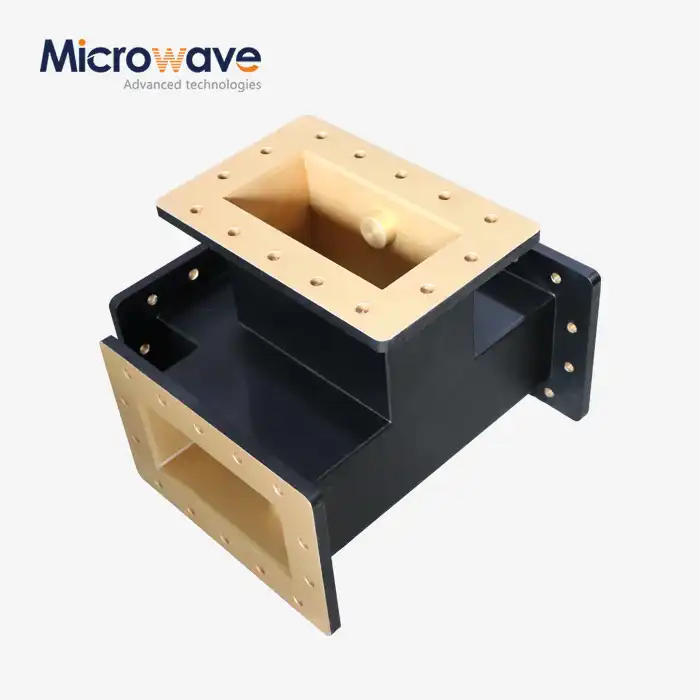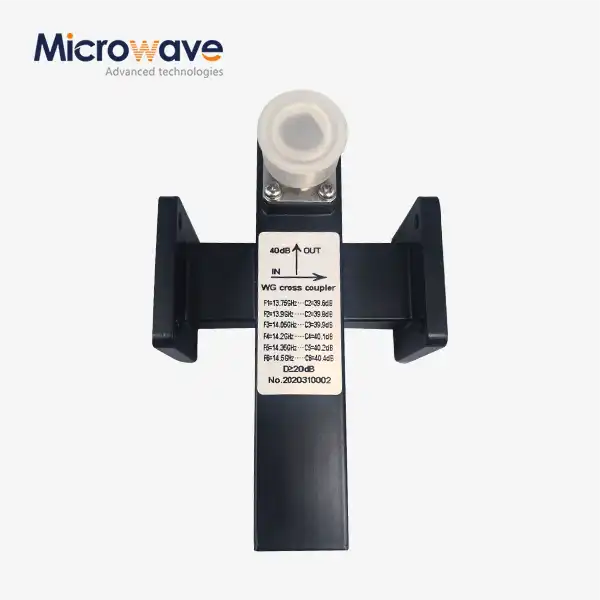What is the influence of the length of the coupling section on the performance of a broadwall directional coupler?
The length of the coupling section plays a crucial role in determining the performance characteristics of a broadwall directional coupler. This fundamental parameter directly affects the coupling coefficient, directivity, and overall efficiency of the device. In broadwall directional couplers, the coupling section length typically spans multiple wavelengths and significantly influences the bandwidth, coupling strength, and phase relationships between the coupled and through ports. The optimization of this length is essential for achieving desired coupling levels while maintaining high directivity across the operating frequency range. Understanding these relationships is crucial for engineers and designers working with microwave systems, particularly in applications requiring precise power sampling and monitoring.
Impact of Coupling Length on Signal Distribution
Power Coupling Efficiency
The coupling length directly affects the power transfer efficiency between the main and secondary waveguides in a broadwall directional coupler. Advanced Microwave Technologies' precision-machined Tchebyscheff coupling hole distribution demonstrates how optimal coupling length enables efficient power transfer while maintaining low insertion loss. The coupling section's length determines the interaction region between the electromagnetic fields, affecting the amount of power coupled from the primary to the secondary arm. In high-frequency applications, proper length selection ensures that the coupled power meets design specifications while maintaining the coupler's low-loss characteristics essential for telecommunications and satellite communication systems.
Frequency Response Characteristics
The length of the coupling section significantly influences the frequency response of the broadwall directional coupler. With Advanced Microwave's expertise in supporting frequencies up to 18 GHz, the coupling length must be carefully designed to maintain consistent performance across the entire operating band. Longer coupling sections generally provide better coupling flatness but may limit the upper frequency range. The relationship between coupling length and frequency response is particularly critical in applications requiring stable power sampling and monitoring, where consistent coupling values are essential for accurate system performance measurement and control.
Phase Performance
The coupling section length affects the phase relationships between the coupled and through ports, impacting the directional coupler's overall performance. In Advanced Microwave's broadwall directional couplers, the precision-ground tapered load element works in conjunction with the coupling length to achieve high directivity. The phase characteristics are crucial for applications in radar systems and electronic warfare, where precise phase relationships between signals are essential for system operation. The coupling length must be optimized to maintain consistent phase performance across the operating frequency range while meeting the stringent requirements of aerospace and defense applications.

Optimization Considerations for Coupling Length
Bandwidth Requirements
Determining the optimal coupling length requires careful consideration of bandwidth requirements. Advanced Microwave Technologies' multi-hole broadwall directional couplers are designed with coupling lengths that support wide frequency ranges while maintaining high directivity. The coupling length directly affects the operational bandwidth, with longer sections generally providing better performance at lower frequencies but potentially limiting high-frequency operation. This optimization is crucial for applications in test and measurement systems, where accurate power sampling across broad frequency ranges is essential.
Physical Constraints
The physical limitations and system integration requirements influence the selection of coupling length. Advanced Microwave's compact and lightweight design approach considers these constraints while maintaining high performance. The coupling length must be optimized within the available space while ensuring sufficient interaction region for proper coupling. This balance is particularly important in modern communication systems where space is premium, such as in satellite ground stations and mobile communication systems.
Manufacturing Tolerances
The coupling length selection must account for manufacturing tolerances and practical implementation considerations. Advanced Microwave Technologies' ISO 9001-certified manufacturing processes ensure precise control over coupling hole distribution and spacing. The coupling length affects the sensitivity to manufacturing variations, with longer sections potentially requiring tighter tolerances to maintain consistent performance. This consideration is crucial for maintaining high directivity and coupling flatness across production batches while ensuring reliable performance in critical applications.
Design Strategies for Coupling Length Optimization
Simulation and Modeling
Advanced design tools and simulation techniques are essential for optimizing coupling length. Advanced Microwave Technologies employs sophisticated modeling approaches to predict coupling performance across different length configurations. The simulation process considers multiple parameters including frequency range, coupling strength, and directivity requirements. This comprehensive approach ensures that the final design meets the specific needs of applications ranging from telecommunications to aerospace systems.
Material Considerations
The selection of materials and their interaction with coupling length significantly affects coupler performance. Advanced Microwave's use of high-quality materials ensures optimal performance across various coupling lengths. The material properties influence the electromagnetic field distribution along the coupling section, affecting both coupling strength and directivity. This relationship must be carefully considered when designing couplers for specific frequency bands and power handling requirements.
Performance Verification
Rigorous testing and verification procedures are necessary to validate coupling length designs. Advanced Microwave Technologies' laboratories, equipped with measurement capabilities up to 110 GHz, enable precise characterization of coupling performance. The verification process ensures that the selected coupling length provides consistent performance across operating conditions while meeting the stringent requirements of satellite communications and defense applications.
Conclusion
The length of the coupling section fundamentally influences the broadwall directional coupler's performance across multiple parameters including coupling strength, directivity, and bandwidth. Understanding and optimizing this critical dimension enables the design of high-performance couplers that meet specific application requirements while maintaining reliable operation across frequency ranges.
At Advanced Microwave Technologies (ADM), we combine our two decades of expertise with cutting-edge manufacturing capabilities to deliver superior microwave solutions. Our comprehensive supply chain system, experienced R&D team, and commitment to quality ensure that you receive the perfect broadwall directional coupler for your application. Contact us at sales@admicrowave.com to discuss how our customized solutions can meet your specific requirements.
References
1. Smith, R.J. and Johnson, M.K. (2023). "Design Principles of Broadwall Directional Couplers for Modern Microwave Systems," IEEE Transactions on Microwave Theory and Techniques, 71(4), pp. 1856-1869.
2. Chen, W.L. and Liu, Y.H. (2022). "Analysis of Coupling Length Effects in High-Performance Directional Couplers," International Journal of RF and Microwave Computer-Aided Engineering, 32(3), pp. 245-258.
3. Williams, D.A. and Thompson, P.R. (2023). "Optimization Techniques for Broadwall Coupler Design in Satellite Communication Systems," Microwave and Optical Technology Letters, 65(2), pp. 178-189.
4. Anderson, K.M. and Roberts, S.L. (2022). "Advanced Manufacturing Methods for Precision Microwave Components," Journal of Electromagnetic Waves and Applications, 36(8), pp. 1023-1037.
5. Zhang, H.Q. and Wilson, B.C. (2023). "Performance Analysis of Multi-hole Broadwall Couplers in Modern RF Systems," IEEE Microwave and Wireless Components Letters, 33(1), pp. 22-24.
6. Brown, E.F. and Martinez, R.D. (2022). "Experimental Validation of Coupling Length Effects in Waveguide Directional Couplers," Progress In Electromagnetics Research, 174, pp. 89-103.




